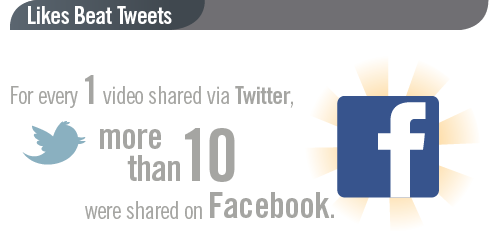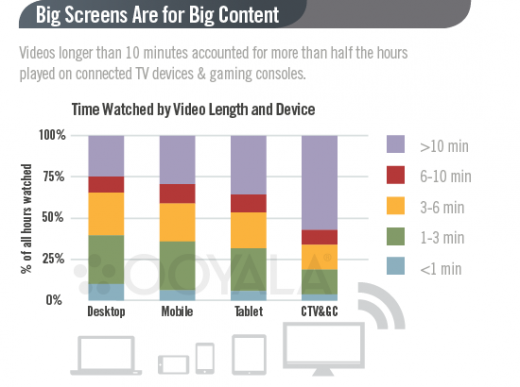
New figures reveal that video-viewing across connected TVs and mobile devices is rising sharply, and could pave the way for online video viewing to hit new heights in 2012.
Digital video technology company Ooyala has published its Q4 2011 Video Index report, which indicates that between Q3 and Q4 in 2011, Google TV viewing grew by 91%, while video plays on tablets, smartphones and connected TVs nearly doubled too. In the social sphere, Facebook users on average share ten times more video than Twitter users.
Each quarter, Ooyala provides trends based on the viewing habits of its 100 million plus monthly viewers, with this data used by publishers to better understand audiences and drive online video revenue. Some other key findings include:
- Both iPhone – boosted by the iPhone 4S release in October – and Android grew rapidly quarter-over-quarter in terms of videos played and hours watched
- Tablet viewers are far more engaged than desktop viewers – they were 45% more likely to complete at least 75% of videos played
Ooyala hosts one of the world’s largest video analytics data stores, and receives over one billion daily analytics “pings,” otherwise known as data-queries, across more than 110 countries each month. Nearly a third US online video viewers use an Ooyala-powered player.
The shifting sands of TV
This new data backs-up previous assertions that TV is most certainly moving into the online realm, and Ooyala co-founder Bismarck Lepe reckons getting a grip on multi-device TV-viewing habits is key for publishers to monetize their content.
“The dramatically increased engagement with IP-delivered video creates opportunities on a massive scale for publishers and brand marketers,” he says. “Understanding the changing dynamics of multi-device video consumption is key to delivering a more personalised experience for consumers while creating new revenue streams and growing audiences.
“While people are still watching much more traditional TV than streaming video, our data shows we’re on a clear and irreversible course towards an IP-delivered future,” continued Lepe. “For example, looking at non-desktop video views, Q4 was the second straight quarter of nearly one hundred percent growth. The Video Index also shows people are far more engaged on tablets, which are closer to TVs than they are to smartphones when it comes to viewing behaviour.”
The report says that video-sharing is evolving on Android and iOS devices, with both demonstrating significant growth, though the iPhone’s share of total video plays outpaced that of Android for much of the quarter – this is quite impressive given that Android is used across multiple manufacturers’ devices.
As you can see, the video-viewing on the iPhone grew significantly throughout the last month of 2011.

Videos longer than ten minutes accounted for more than half the video content viewed on connected TVs and consoles, compared to just a quarter on desktop computers. Interestingly though, it seems more hours are spent watching longer-form video on mobile phones than on computers.

Ooyala technology is used by companies such as ESPN, Victoria’s Secret, Telegraph Media Group, Tennis Australia, The North Face, Rolling Stone, Dell, Sephora and Yahoo! Japan. The full Video Index report is available to download in English, French, Japanese, Portuguese and Spanish to support Ooyala’s broad customer base.
Get the TNW newsletter
Get the most important tech news in your inbox each week.



